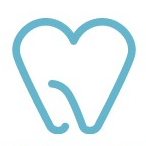The Importance of Teeth Cleaning and Methods Introduction
What is teeth cleaning
Teeth cleaning, commonly known as oral hygiene, is a professional term for subgingival scaling and root planing. It refers to the use of dental instruments to remove dental calculus, plaque, and stains from the gums, and to polish the tooth surfaces to delay the re-deposition of plaque and calculus. Scaling and root planing is the most effective method to remove plaque and calculus from the gums, which are the main local irritants of periodontal disease.
Indications:
1. Dental calculus and stains: Teeth cleaning can remove dental calculus and stains, restoring the natural color of the teeth.
2. Gingivitis and periodontal disease: Scaling and root planing is the main treatment for gingivitis and the first step in the treatment of periodontal disease.
3. Preventive treatment: Teeth cleaning is an important measure to maintain periodontal health and prevent the occurrence or recurrence of gingivitis and periodontal disease, especially in patients who have undergone periodontal treatment.
4. Preparation for other dental treatments: Teeth cleaning can clean the oral cavity before orthodontic treatment, oral restoration, and oral surgery.
Contraindications:
1. Patients with cardiac pacemakers.
2. Patients with malignant tumors in the gum area.
3. Patients with cardiovascular diseases such as angina pectoris, recent myocardial infarction, uncontrolled hypertension, and heart failure are not suitable for routine dental cleaning.
4. Patients with acute inflammation of local oral tissues (except acute necrotizing gingivitis).
5. Patients with various bleeding disorders.
6. Patients with certain acute infectious diseases, such as acute hepatitis.
7. Pregnant women.
Methods of dental cleaning:
1. Manual dental cleaning: The dentist uses dental instruments for cleaning, which has low efficiency and average cleaning effect. However, it almost causes no damage to the teeth and is most suitable for children.
2. Ultrasonic dental cleaning: Ultrasonic dental instruments are used to remove plaque and calculus, causing minimal damage to the tooth surface. It is convenient to operate, has obvious effects, does not require anesthesia, and has no side effects. Ultrasonic basic dental cleaning is the most common method, which can effectively prevent dental calculus and periodontal disease.
3. Sandblasting dental cleaning: Sandblasting dental cleaning is based on regular dental cleaning, using special salt sand and high-pressure water for cleaning. It is suitable for patients with soft plaque or slight discoloration of teeth caused by smoking, tea drinking, alcohol consumption, or coffee drinking.
The main purpose of teeth cleaning is to prevent and treat oral diseases. Teeth cleaning can alleviate the symptoms of gingivitis and periodontitis. In addition to regular dental cleaning (supragingival scaling), patients with obvious periodontitis usually need to undergo deep cleaning (subgingival scaling) and other treatments. Oral experts recommend regular teeth cleaning every six months to one year.

